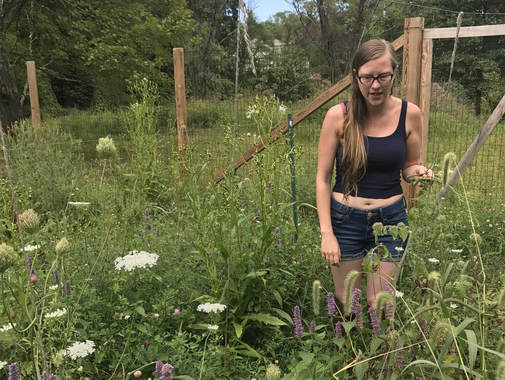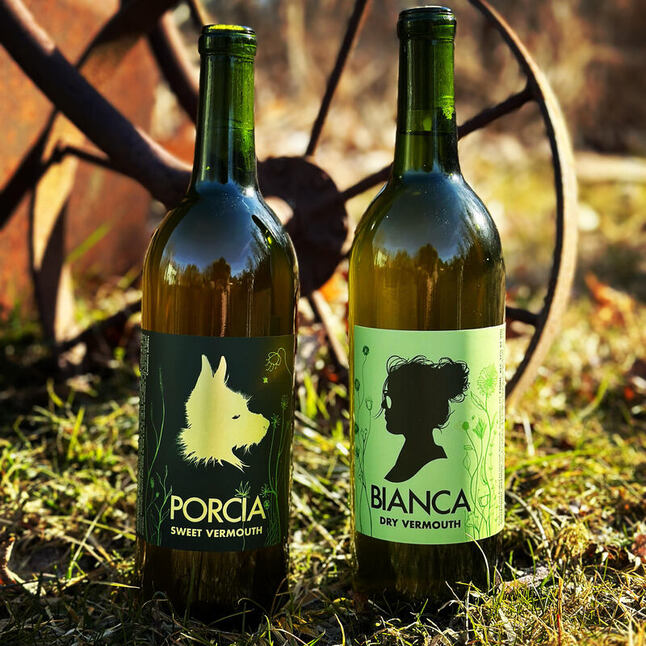Uncouth Vermouth, Bianca Miraglia, Hudson Valley, New York
Uncouth Vermouth grew out of one woman’s fascination with the historical roots of this underappreciated aperitif, and a single-minded desire to create an authentic platform from which to celebrate that which is hyper-seasonal and hyper-local.
Vermouth is, simply, a fortified, aromatized wine. More often than not, we begin with a white wine base pillaged from our good friends at Red Hook Winery in Brooklyn, add in our own foraged mugwort (artemesia vulgaris, the true foundation of vermouth — not, as some would have it, wormwood), and a smattering of locally available plants, herbs, barks, roots, leaves, fruits and et cetera, harvested at the height of their deliciousness and captured in bottle to showcase the unique terroir of their origins.
Uncouth believes in transparency and commitment to sustainability. Your closest source isn’t always your best source, but if you’re willing to do your homework you can create a delicious, locally-sourced vermouth without a drop of sugar, no additives and/or preservatives. All ingredients are either foraged from untouched areas, or purchased from a farm that does not succumb to modification and is preferably non-profit. Farmers, not grocery stores. The middle of the woods, not Prospect Park. My number one rule of thumb has always been, what grows together, goes together. This is a food, meant to be enjoyed in good conscience because this is what we are worth.
Bianca Miraglia
Founder, Uncouth Vermouth
Vermouth is, simply, a fortified, aromatized wine. More often than not, we begin with a white wine base pillaged from our good friends at Red Hook Winery in Brooklyn, add in our own foraged mugwort (artemesia vulgaris, the true foundation of vermouth — not, as some would have it, wormwood), and a smattering of locally available plants, herbs, barks, roots, leaves, fruits and et cetera, harvested at the height of their deliciousness and captured in bottle to showcase the unique terroir of their origins.
Uncouth believes in transparency and commitment to sustainability. Your closest source isn’t always your best source, but if you’re willing to do your homework you can create a delicious, locally-sourced vermouth without a drop of sugar, no additives and/or preservatives. All ingredients are either foraged from untouched areas, or purchased from a farm that does not succumb to modification and is preferably non-profit. Farmers, not grocery stores. The middle of the woods, not Prospect Park. My number one rule of thumb has always been, what grows together, goes together. This is a food, meant to be enjoyed in good conscience because this is what we are worth.
Bianca Miraglia
Founder, Uncouth Vermouth
The Dry vermouth "Bianca" is an NV blend of white grapes, mostly from Macari Vineyards. The Sweet vermouth "Porcia" (named after Bianca's dog) is made mostly from Finger Lakes Riesling. "I use foraged artemisia vularis (mugwort) and other found and homegrown aromatics from my 16 acre forest farm in Saugerties, on Lake Katrine. The aromatic compositions of the dry and sweet are completely different. Both dry and sweet are fortified with single-distilled Catawba brandy made in a combo still at Finger Lakes Distilling. Every ingredient is from New York. No sugar added. My Method is much more closely related to the ancient way of making vermouth than the 1850s/modern way, which is how everyone other than me makes vermouth. Not that there's anything wrong with that, there is a lot of good vermouth out there."- Bianca


